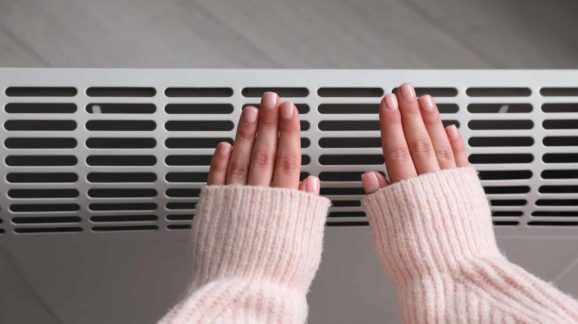No Matter How You Heat Your Home, This Winter Is Costing A Lot More

Photo Credit: Getty
We are wrapping up the winter of 2021-2022, the first full one under the Biden administration and its energy policies. It has been a rough one for Americans struggling to pay their heating bills, with many if not most households paying hundreds of dollars more than last year.
Last October, the U.S. Energy Information Administration (EIA) released its Winter Fuels Outlook, which anticipated sizeable increases in heating costs for the upcoming cold weather months. Now that winter is nearly over, we know that EIA’s dire predictions were right, and in many instances understated the hardships. This has been further confirmed by the latest inflation numbers from the Bureau of Labor Statistics showing a January 2021 to January 2022 increase of 27 percent for energy. Higher home heating costs add to gasoline prices that are a dollar per gallon higher than a year ago to make for a particularly painful double whammy of energy price increases for consumers.

Actual Costs At Least As Bad as Expected
For the nearly half of American households that heat their homes with natural gas, the EIA predicted a 30 percent increase, or $173, to $746 as compared to last winter. But a colder-than-expected January and skyrocketing natural gas prices made things considerably worse in some parts of the country. Millions of natural gas-dependent homeowners could see cost increases of $400 or more.
The EIA projected the 41 percent who heat with electricity to see costs rise by 6.3 percent, or $76, to $1,268 over the winter months. But with electricity rates rising an average 10.7 percent from January 2021 to January 2022, the actual jump could be as much as double the estimate.
Propane is used in about 5 percent of homes, particularly in rural areas, and the IEA projected an additional 54 percent or $631 to $1,799 through the winter. The current propane price is $2.84 per gallon, a bigger jump than expected.
For the 4 percent of households that use heating oil, mostly in the Northeast, the EIA predicted a 43.3 percent or $521 increase to $1,734 through the winter, but recent price increases, tied to oil’s rise to $90 and above, have boosted the price of heating oil to $3.96 per gallon, well over a dollar per gallon higher than a year ago.
A Few Specific Cases
Energy prices fluctuate throughout the winter and vary across locations. So do temperatures, and a generally-milder start to the season gave way to colder-than-average temperatures afterward. But overall, this winter was considerably costlier than last year. Here is the impact on homeowners in a few selected locations:
Natural Gas in Minneapolis/St. Paul, Minnesota. Ratepayers saw a 40 percent jump in natural gas rates in their January bills compared to last year, along with colder-than-expected temperatures. If the rate increases and cold weather hold through March, many Twin Cities homeowners will have paid at least $500 more this winter than last.
Heating Oil in Portsmouth, New Hampshire. Heating oil in New Hampshire currently averages $3.94 per gallon, up from $3.32 a month ago and $2.59 a year ago. The average oil heat-using household is estimated to use 496 gallons per year, though this figure is likely higher in New England after an unusually cold January. Assuming an average of a $1.00 dollar per gallon increase over last winter and consumption of 600 gallons, that means an extra $600 in expenditures.
Propane in Kalamazoo, Michigan. Propane prices in Michigan, currently at $2.54 per gallon, are nearly a dollar per gallon higher than the $1.56 average last winter. With a forecast 672 gallons per household to be used in the Midwest this winter, an increase averaging $1.00 per gallon would translate to an additional cost of $672.
Electricity in Westchester County, New York. In a letter to ratepayers last November, utility Consolidated Edison (Con Ed) warned that electricity customers in Westchester County can expect to pay an average of $21 more per month from November through March, or $105 above last winter. However, more than a few New Yorkers served by Con Ed report increases well into the hundreds of dollars for January alone. The reason given is skyrocketing prices for natural gas, which is used to generate most of the utility’s electricity. Those in the service area who use natural gas directly also face higher bills, the utility warned.